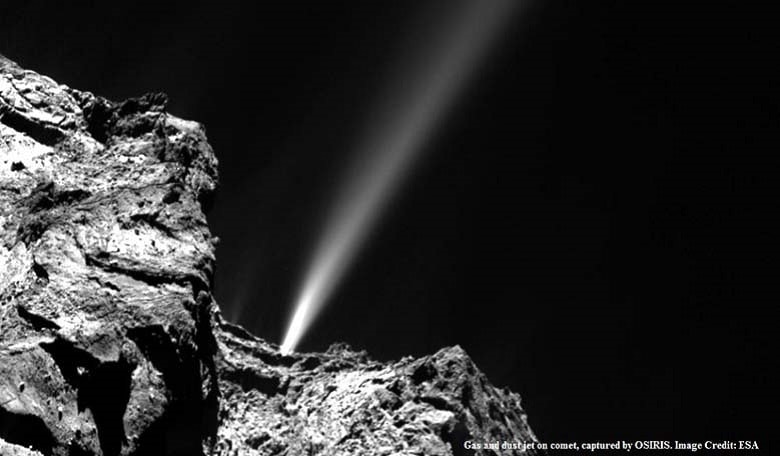The environment of a comet can be a tad… dramatic. Thanks to the Rosetta mission, we’re seeing just how dramatic.
Rosetta’s OSIRIS camera has captured stunning images of a plume of dust and gas erupting from the surface of comet 67P/Churyumov-Gerasimenko as it moves closer and closer to the sun.
According to ESA, which is in charge of the Rosetta mission, the emission lasted only 18 minutes, but did impact the nearby environment for days afterward.
Although we have known for a while now that such emissions occur on comets – especially at and after perihelion (the point in orbit at which an object such as a comet is closest to the sun), this is the first time we are seeing this occur with such stunning clarity.
It’s just one of the many perks of achieving a successful comet landing.











